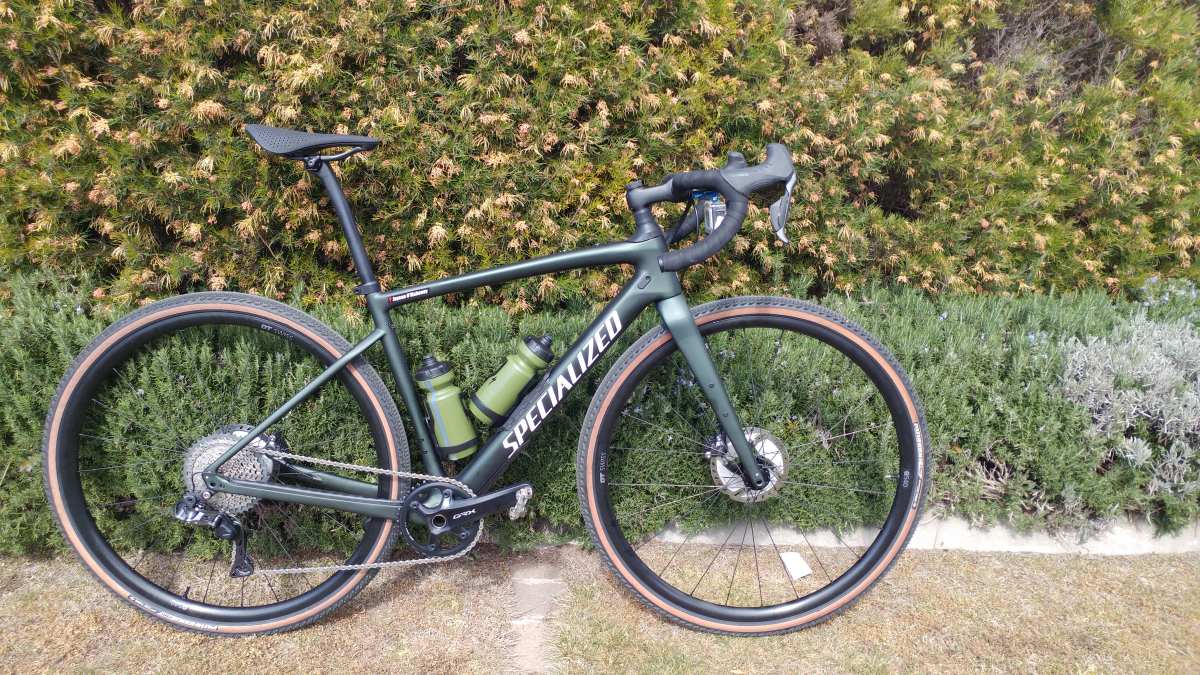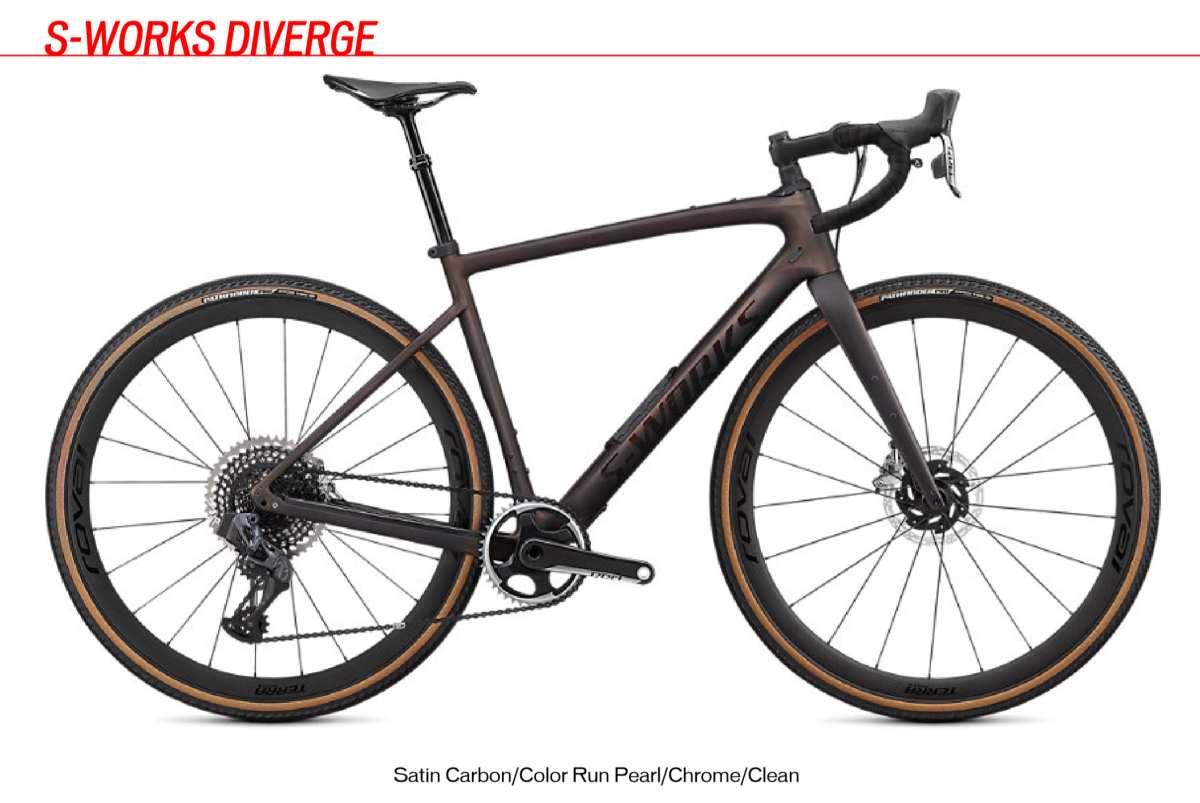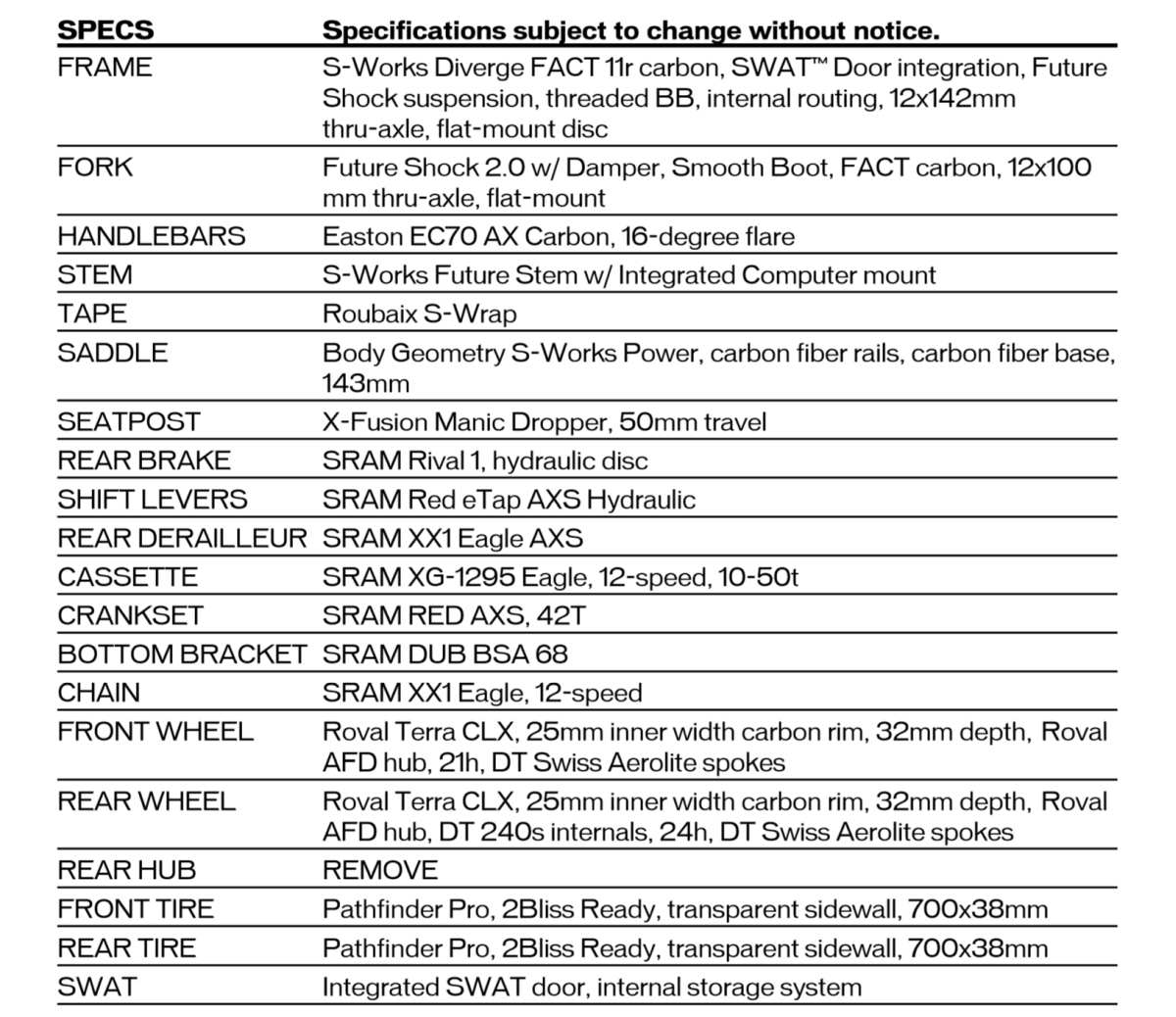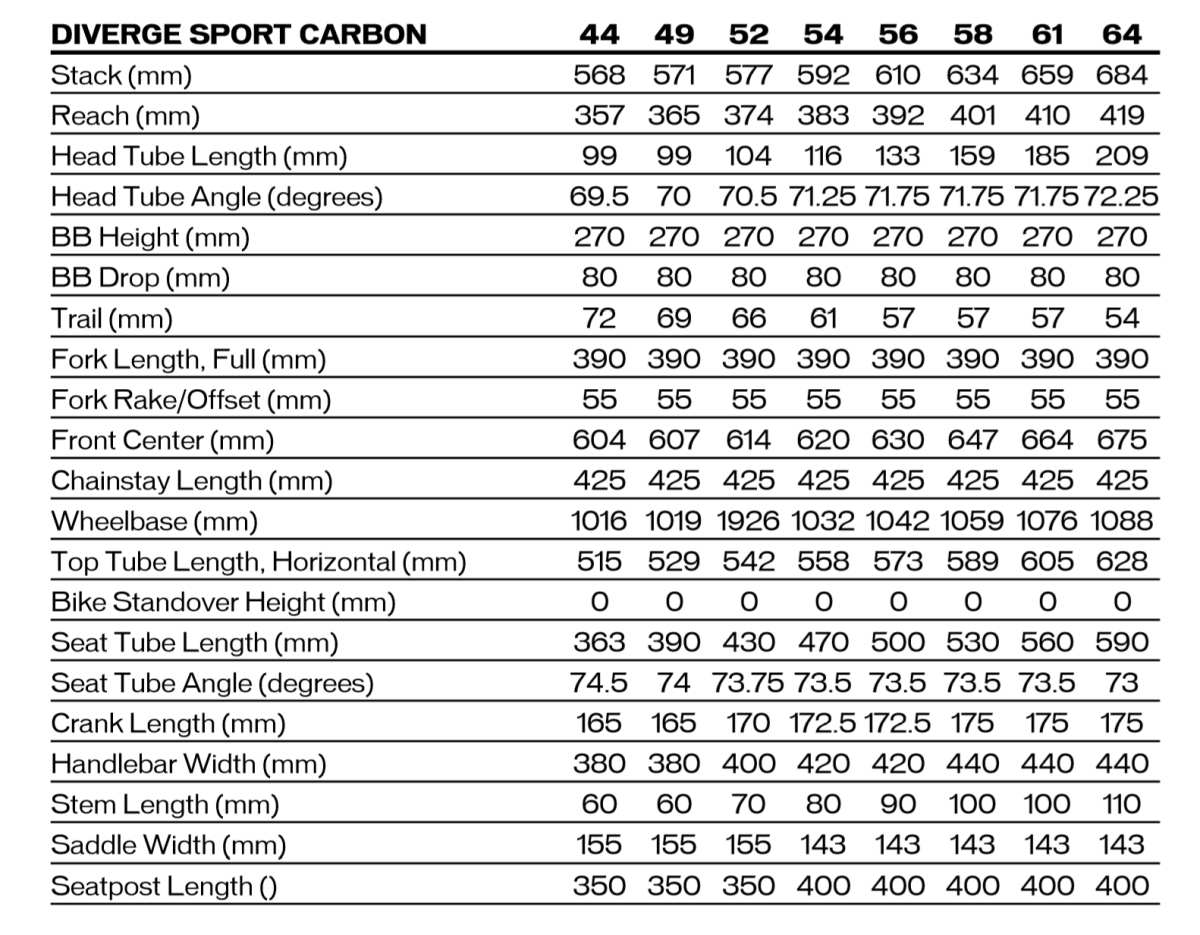When Specialized released the original Diverge in 2014, and updated it in 2017, they set themselves a lofty goal: Make a bike that can handle pavement, flowy singletrack, gravelly roads and everything in between.
Huh? I’m not an engineer but I do have enough cycling experience to understand that a “do-it-all” bike usually has a trade-off or two somewhere. I’m the sort of bloke who would rather have a bicycle perfect for one job versus a Jack and Jill of all trades, because I don’t like making compromises.
With that said, having ridden Diverge 1.0 on a few occasions, I can attest that Specialized did a pretty fine job of checking / ticking all of those “do-it-all” boxes. That bike even went as far as to incorporate suspension beneath the stem with Future Shock 1.0, that didn’t cost a ton of weight, or have the rider bobbing all over the place and diving forward whilst braking.
But now, there’s an all-new Diverge frame and fork, and an upgraded Future Shock. And it’s a lot better. Here’s everything you need to know…
From whence it came…
Specialized had the moniker “Innovate or Die” floating around a few years ago, and considering how fast bike designs for the road less traveled have progressed lately, it doesn’t pay to sit around on one’s hands.
Little known fact, especially those newer to cycling. Specialized is not new to gravel riding, they released a bike way back in 1989 that was a mix of a mountain bike and road bike known as the Rock Combo. It was essentially a 26″ wheeled mountain bike with a flared drop handlebar, 7-speed bar-end shifters and hardpack tyres, a precursor to much of what we see today. You can see a little of that bike in the video above.
Moving forward to 2020, Specialized thought now was a good time to innovate and returned to the drawing board for Version 2 of the Diverge. Quite a lot has changed…
2021 Specialized Diverge Carbon with Future Shock 2.0
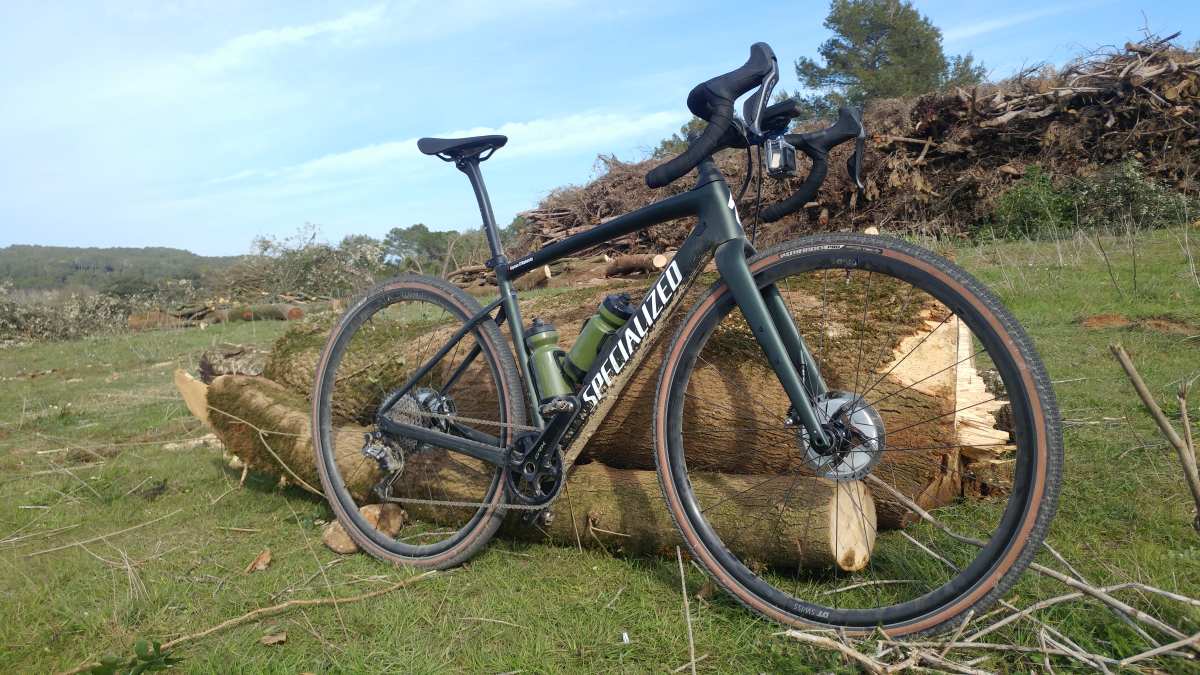
Specialized is committed to suspending the rider and has been doing this since the early 1990’s with their first full-suspension FSR mountain bike design through to the CG-R micro-suspension seatpost. We’ve even seen a really interesting if impractical suspension dropout concept from them.
They believe suspension provides benefits such as enhanced control, traction, performance, rider comfort and so on, principles we’ve all seen applied in high-performance motorsports.
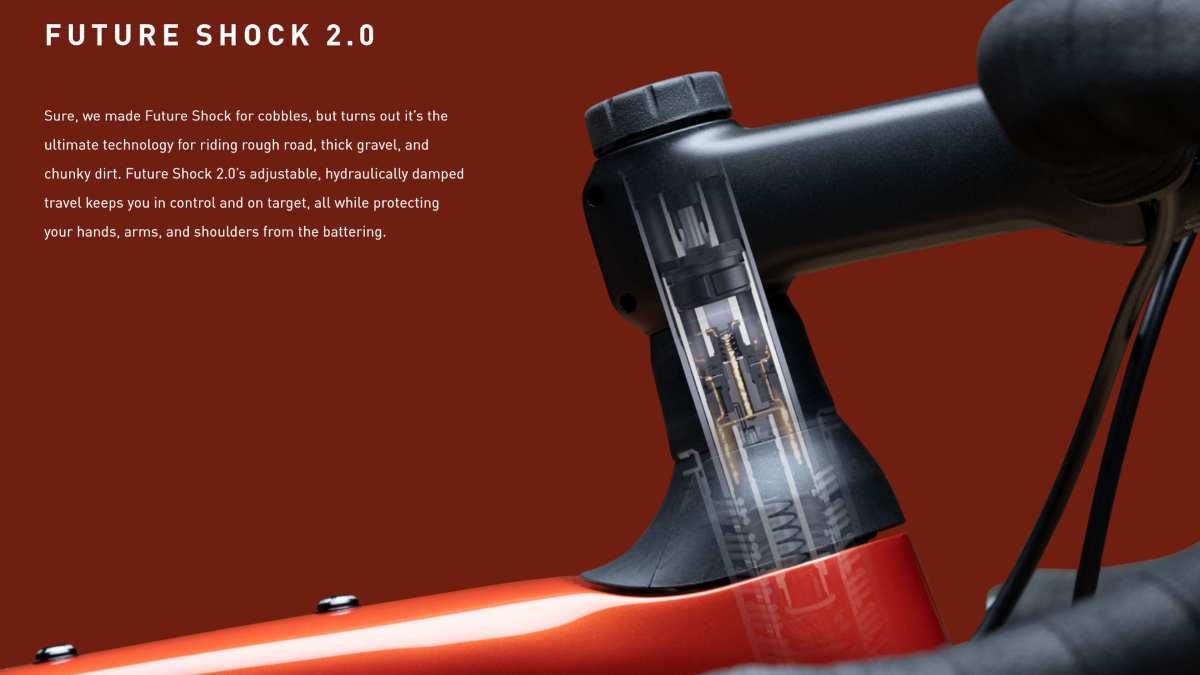
To that end, the new Diverge gets Version 2 of the Future Shock at the front of the bike, an axial compliance suspension design, that places the suspension at the top of the headtube, beneath the stem. Specialized believes this design is the most efficient because it is unaffected by pedaling, versus suspension positioned beneath the headtube.
Specialized launched Future Shock 1.0 in 2016, originally designed to tame the cobblestones of Paris Roubaix, and quickly added it to the next Diverge.
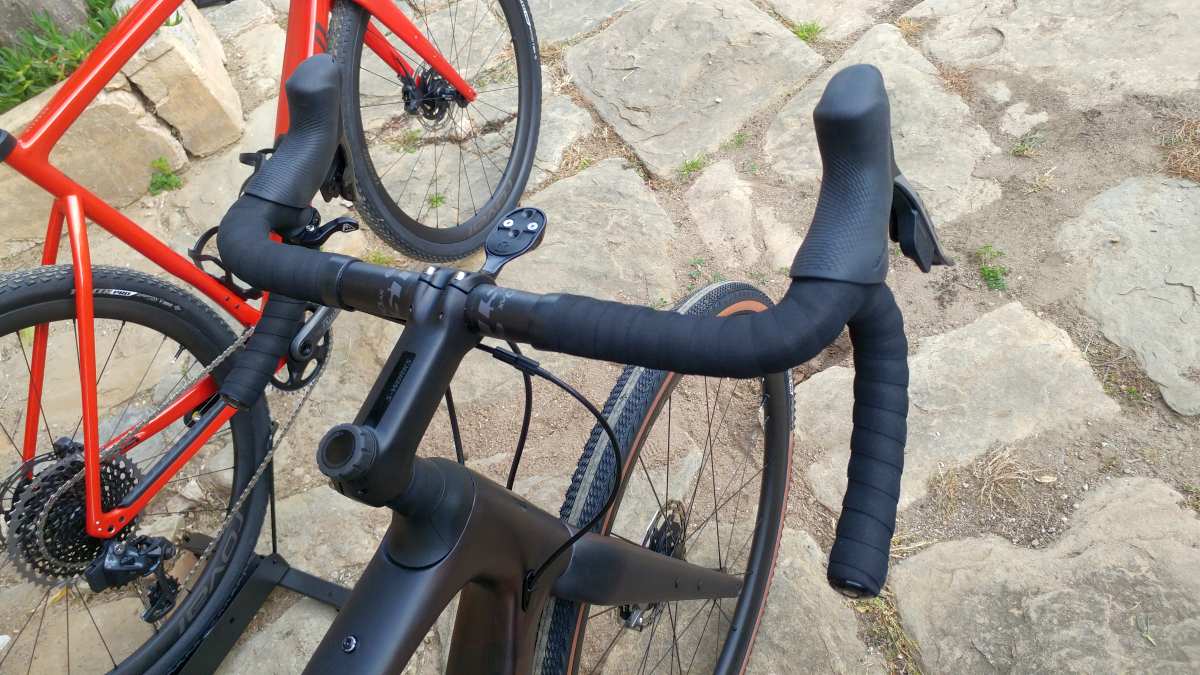
For Future Shock 2.0, Specialized worked with their sponsored road teams to add more control over the suspension, and got it up and running in prototype form in 2017, which ultimately was seen on Peter Sagan’s Paris Roubaix bike that year.
They made changes related to tuning, adjustability and spring rate, and added hydraulic damping to give you more control over its motion. Naturally, this new bike gets the latest Future Shock 2.0, putting the damping adjustment knob front and center:
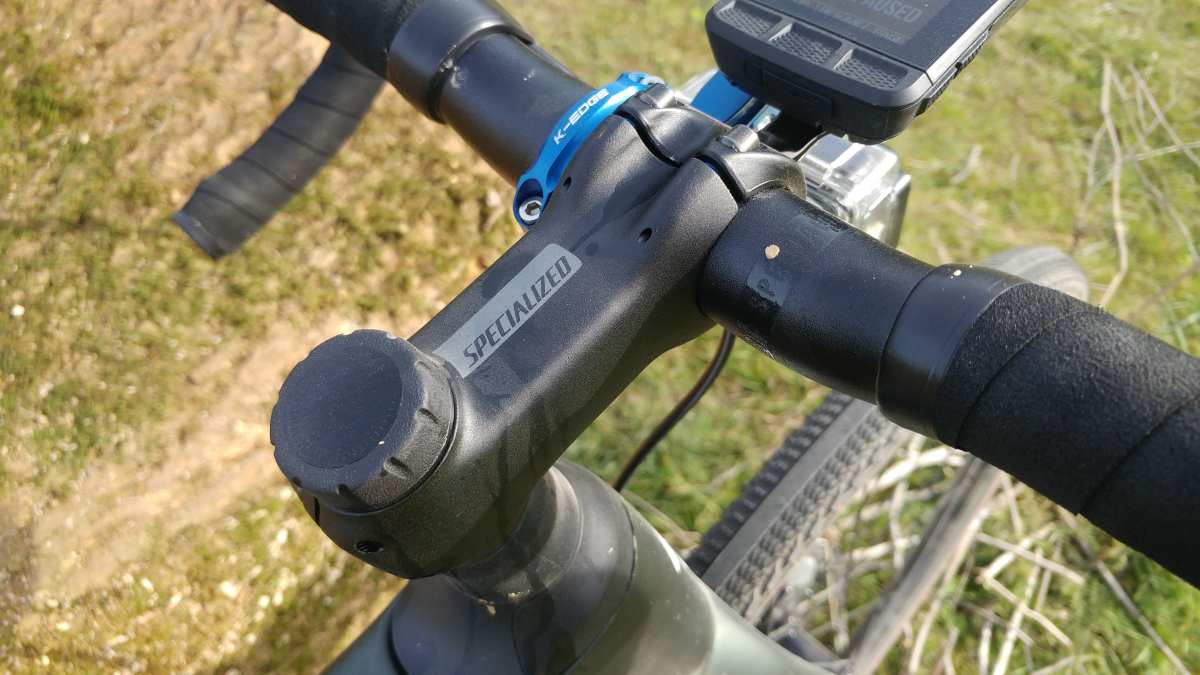
That soaks up the bumps, but the biggest changes are in geometry. Ride quality has been improved thanks to big changes here – the 2021 Diverge is longer and slacker.
Up front is a slightly slacker headtube, a slightly different fork offset, longer reach and a shorter cockpit. In a 56cm frame, reach has been increased by about 13mm, and combined with a slacker head angle and ~5mm more fork offset. This puts the front wheel out about 30mm farther, which aids in high speed stability. That extra distance is countered by a shorter stem to both aid steering response (helps speed it back up a bit when you want to turn) and keep the rider’s hand position in the right place.
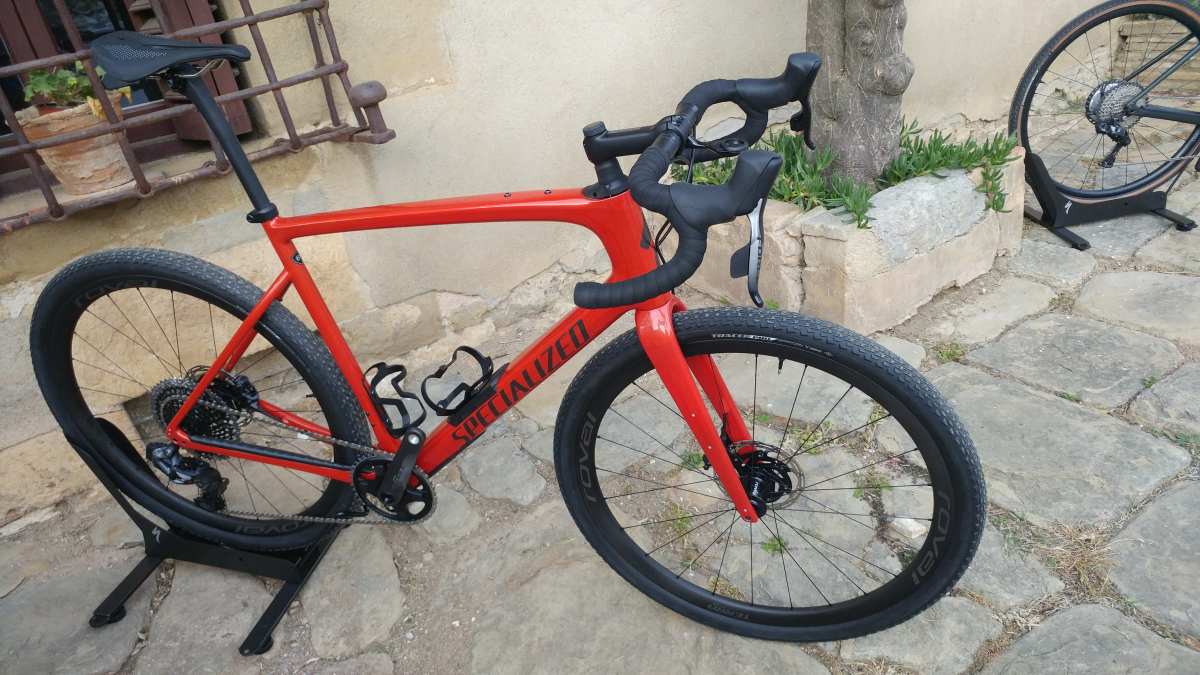
The total wheelbase has increased by about 35mm, with that extra ~5mm coming from the chainstays…but the chainstays are still short at 425mm.
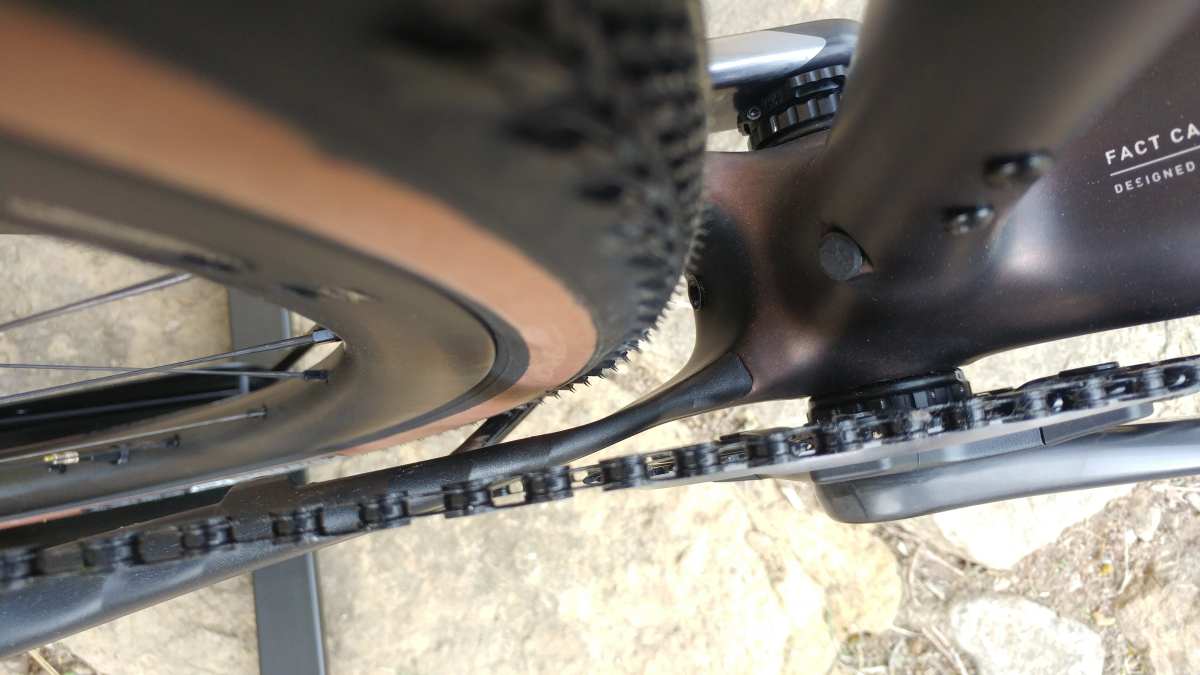
Shorter stays usually result in less tire clearance, but Specialized got around this hurdle with a narrow, 15mm thick beam of solid carbon between the tire and chainrings. Finally, they increased bottom bracket clearance by 6mm over the original Diverge.
Tyre clearance is up to 700c x 47mm with plenty of space at all sides. It will also fit 650b x 2.1″ tires.
What about storage, bottles and other stuff?
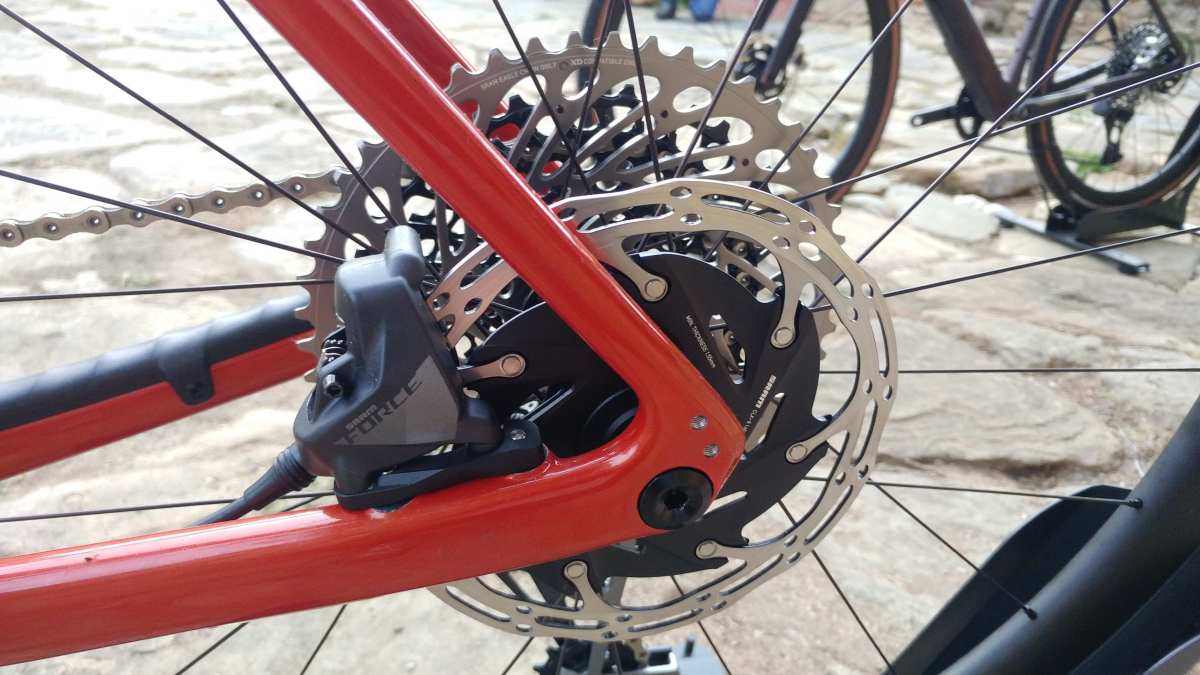
Accessory and bottle cage mounting points have been improved on the frame and fork, and beneath the downtube, making for five mounts total. There are discreet rack and fender mounts, and when the removable rear fender bridge (not shown) is attached between the seatstays, you’re looking at clearance front and rear for 42mm tires with fenders.
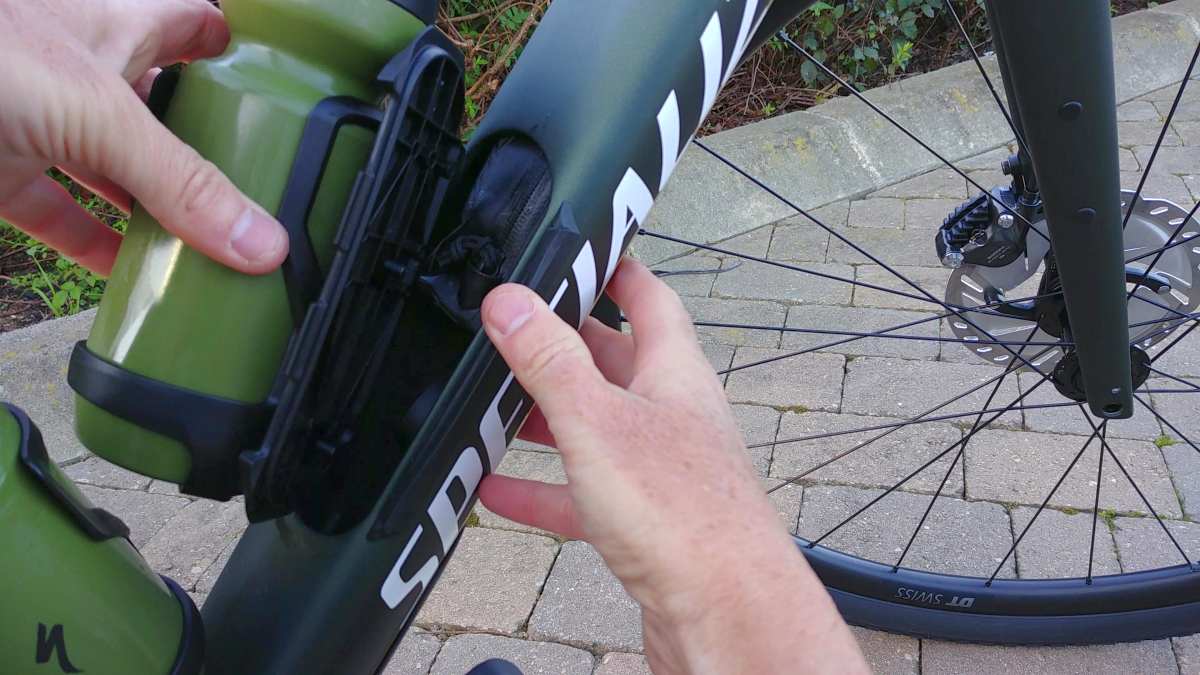
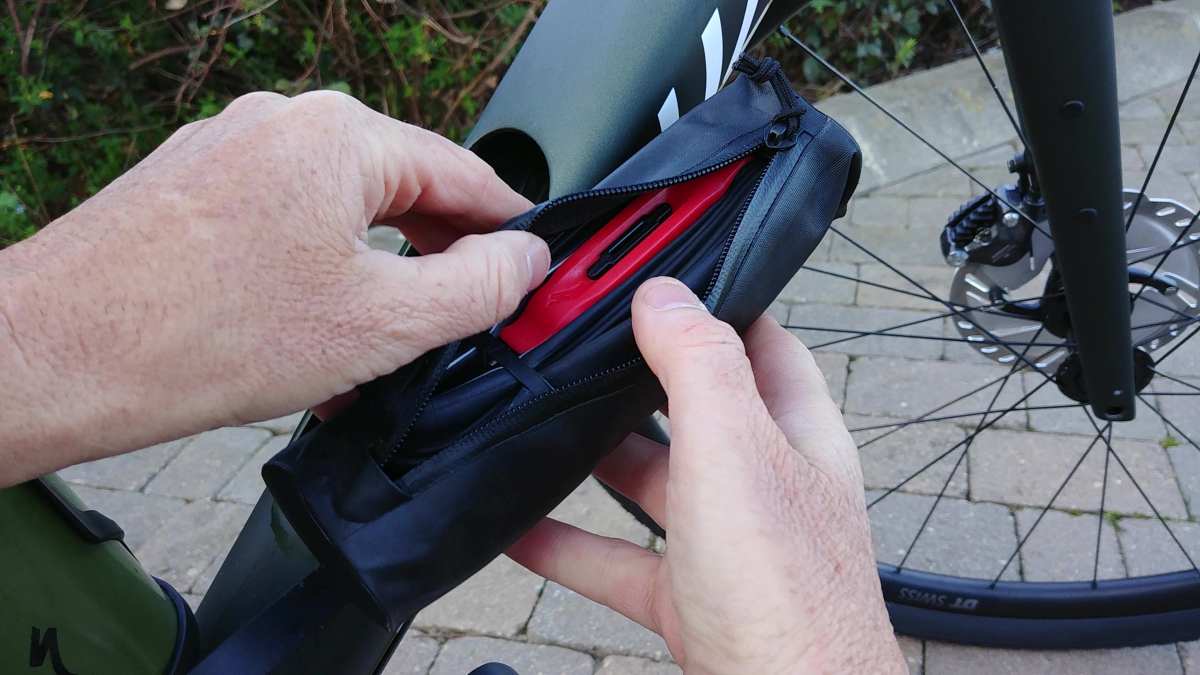
Another big change is the S.W.A.T. (Storage, Water, Air and Tools) system’s location. Gone is the triangle-shaped plastic storage container that sat above the bottom bracket. It’s all moved inside the frame, with a hatch hiding under the downtube’s bottle cage.
Yes, that’s a big hole in the frame. But Specialized enlarged the downtube’s diameter to and reinforced the area with a burlier carbon layup.

The included zippered pouch of the S.W.A.T. system contains a small bracket for the essentials, just wrap your tube around that. It comes standard on most Diverge models, but is unavailable on some of the lower-end builds.
TL;DR – 2021 Specialized Diverge features
- Longer reach
- Slacker head angle
- 35mm longer wheelbase
- Adds up to more stable handling at speed
- SWAT kits on most models, now hidden inside downtube
- Future Shock 2.0 adds hydraulic damping control
- Average painted frame weighs in at around 950 grams
Flat bar Specialized Diverge EVO E5
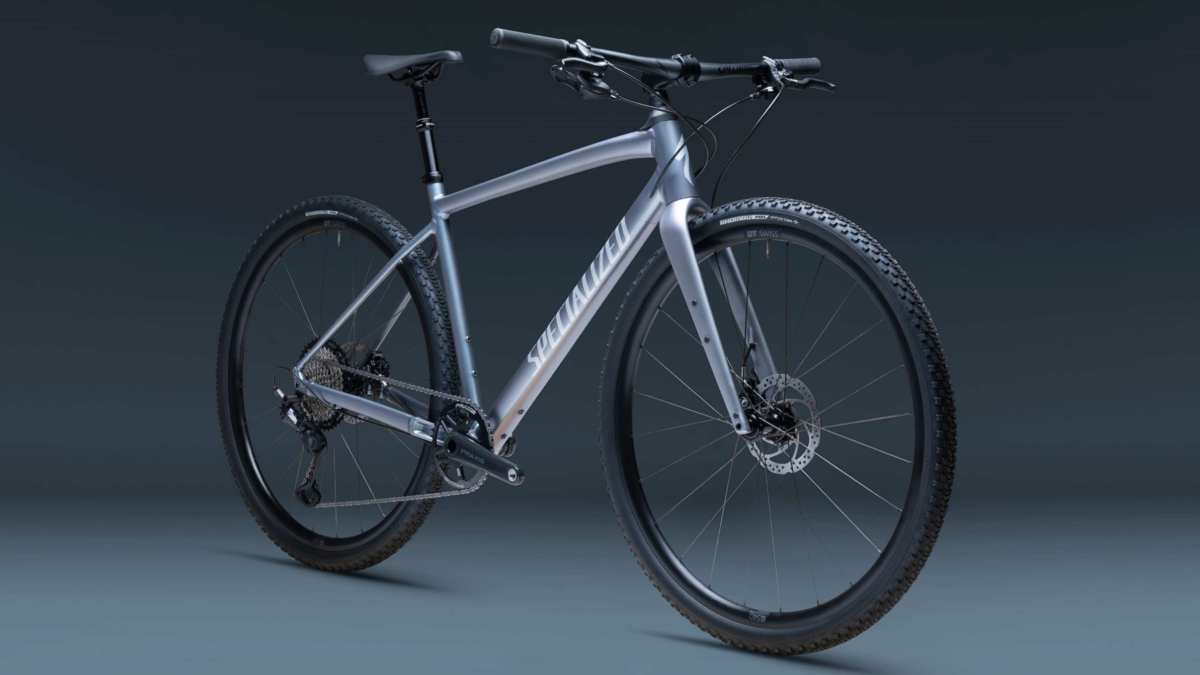
Flat bars are quite popular with some folks who ride gravel, and Specialized gets that. So they created the Diverge EVO E5. The bike is designed completely around flat bars, with a longer top tube and reach more than the drop-bar Diverge – 30mm more to be exact. The stem drops to 70mm, headtube angle has adjusted by a degree, and the bottom bracket has been lowered a few mm. Finally, the frame is 1x specific.
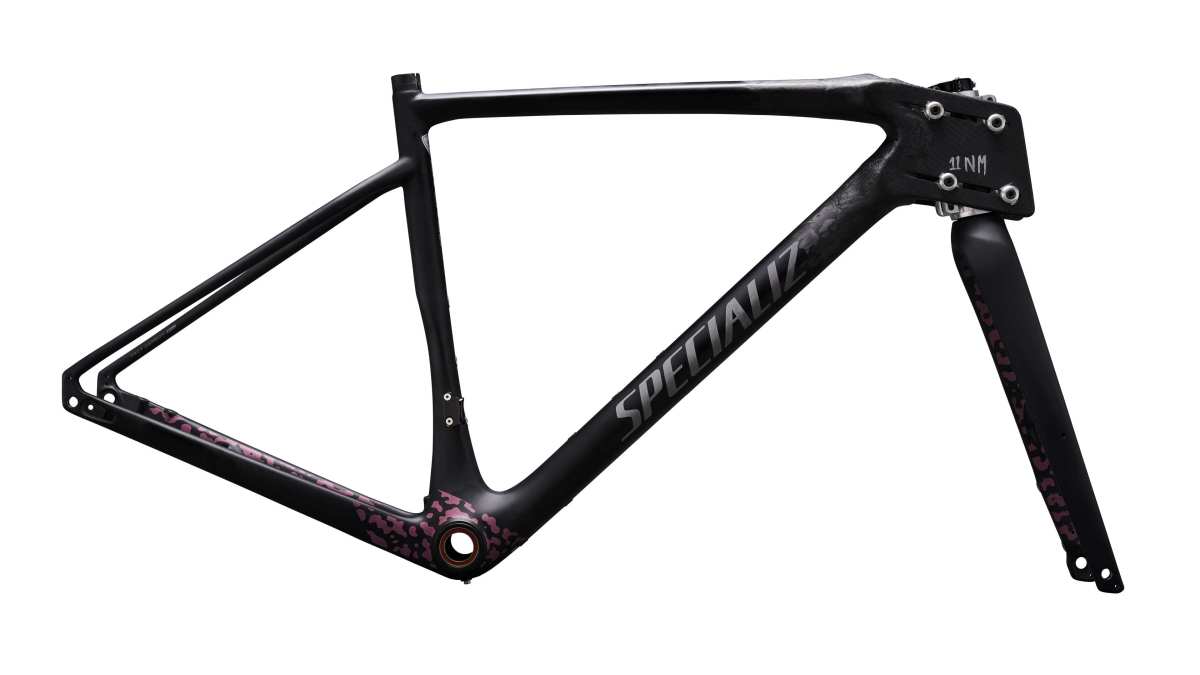
Specialized’s engineers rigged up this special frame to figure out the headtube angles, reach an so on. The Diverge EVO is available in Aluminium E5 only, and three sizes.
2021 Specialized Diverge Specs & Options
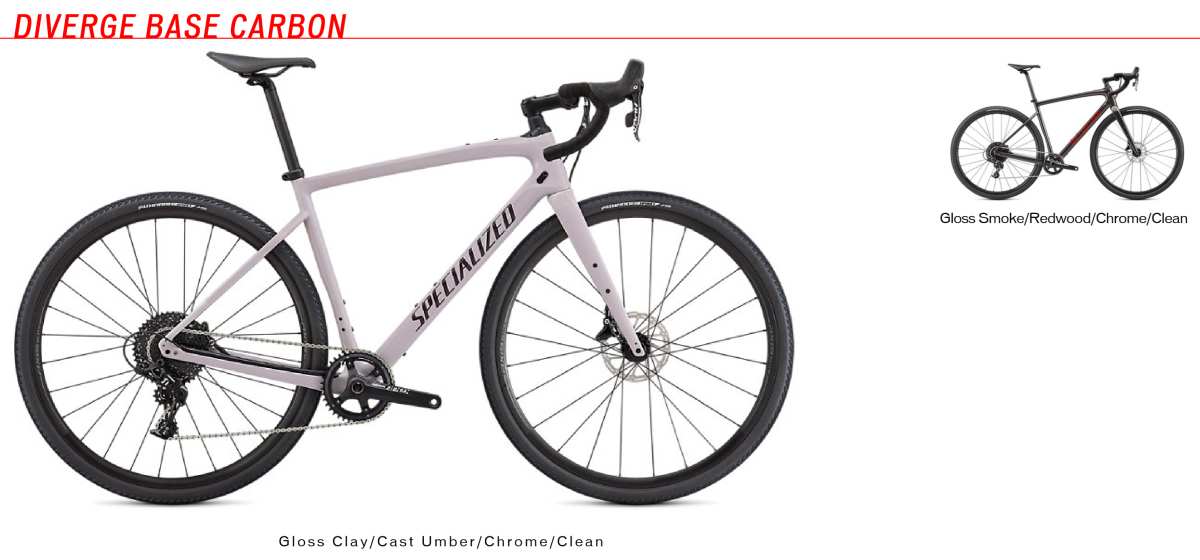
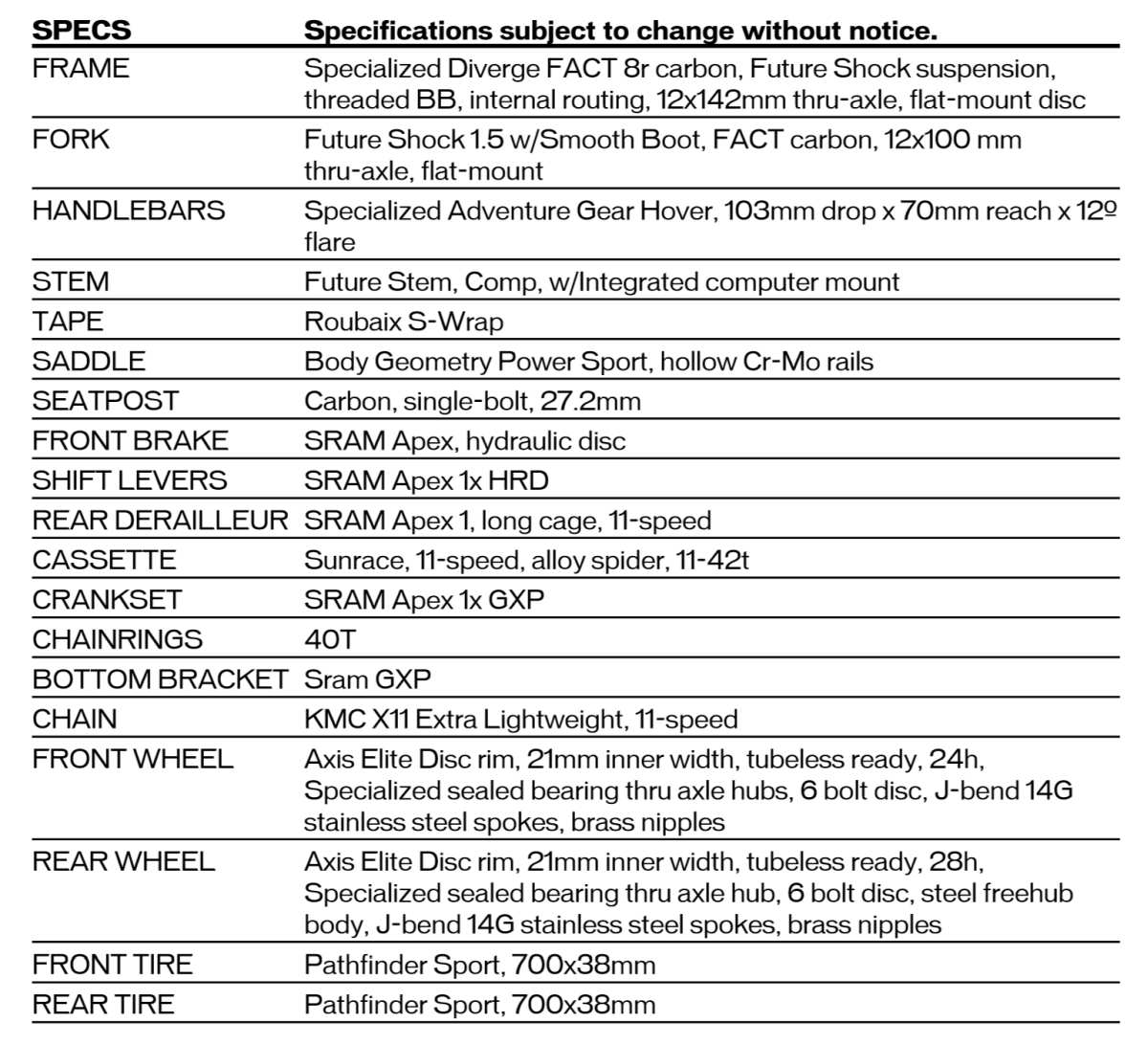
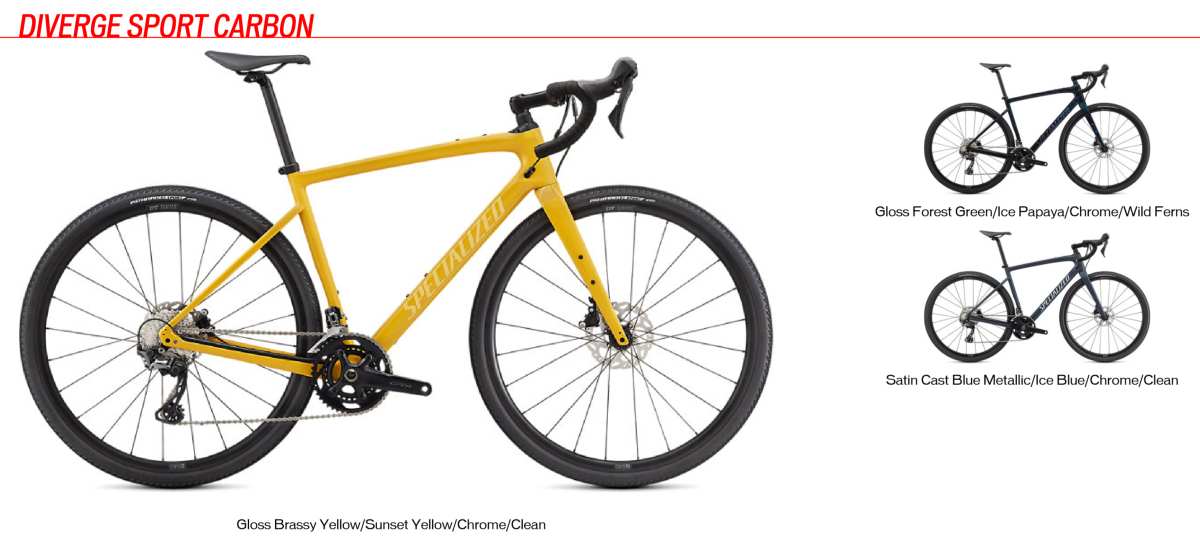
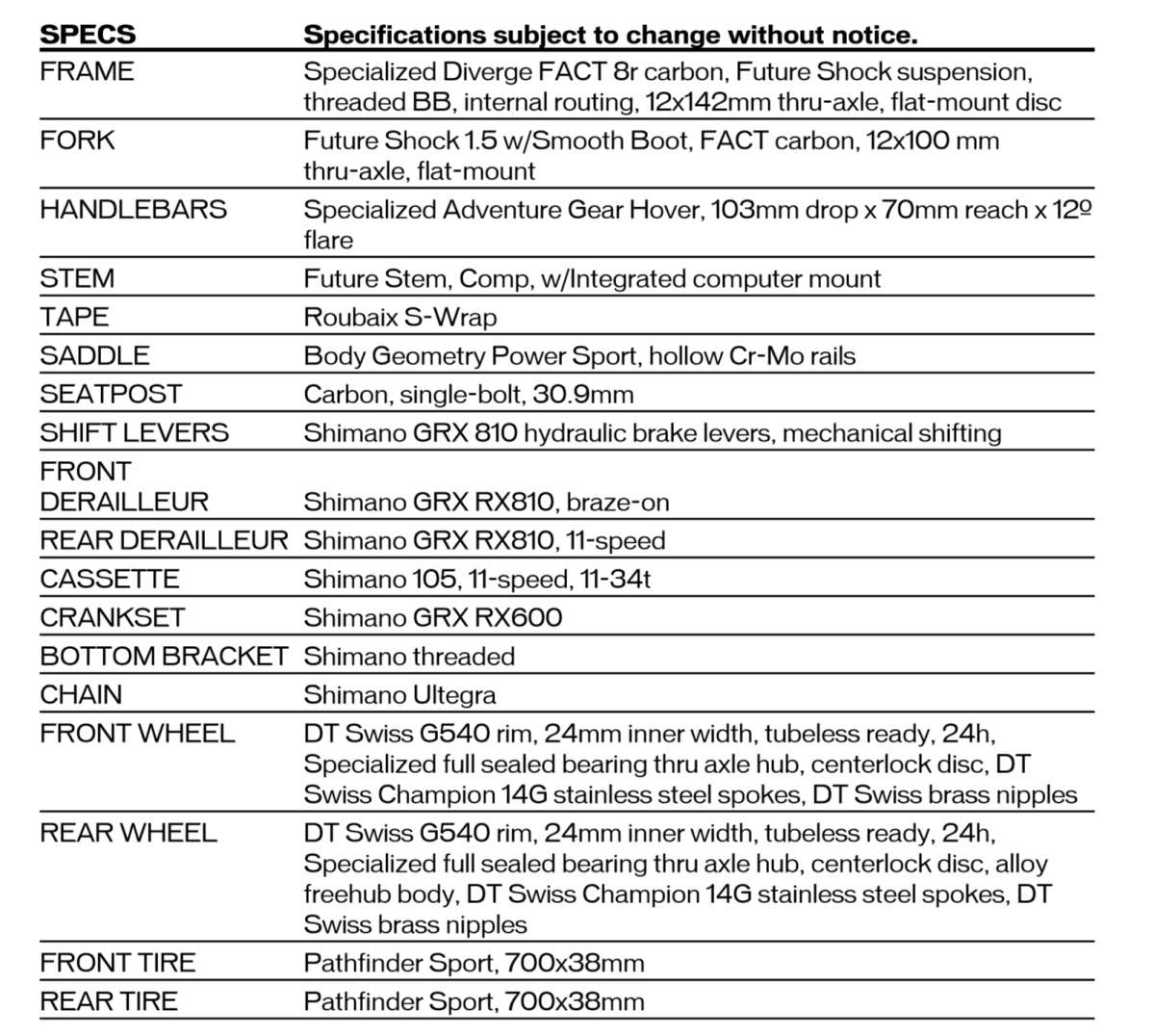
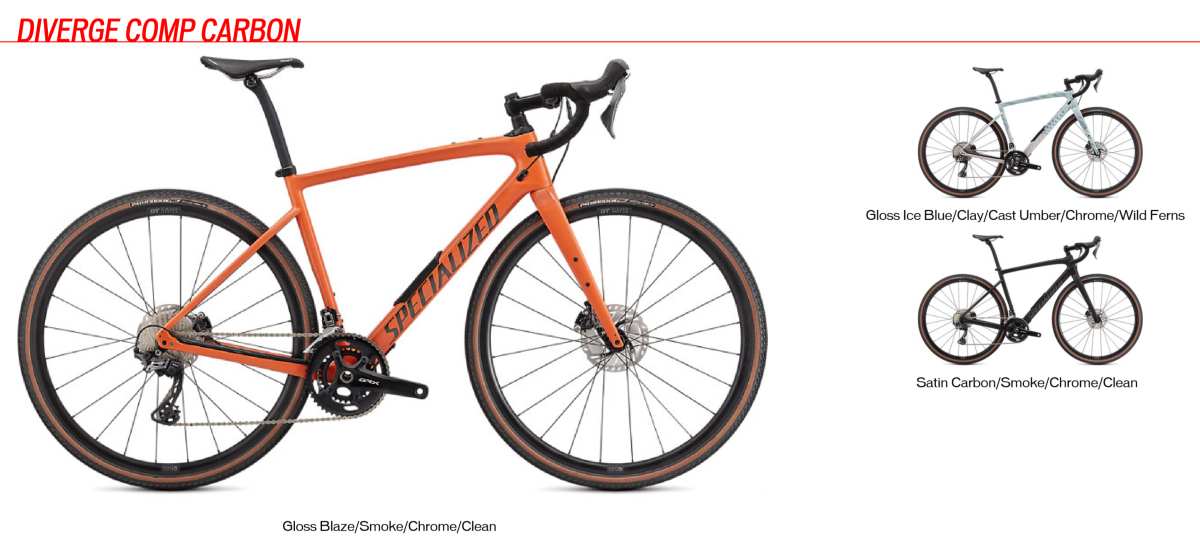
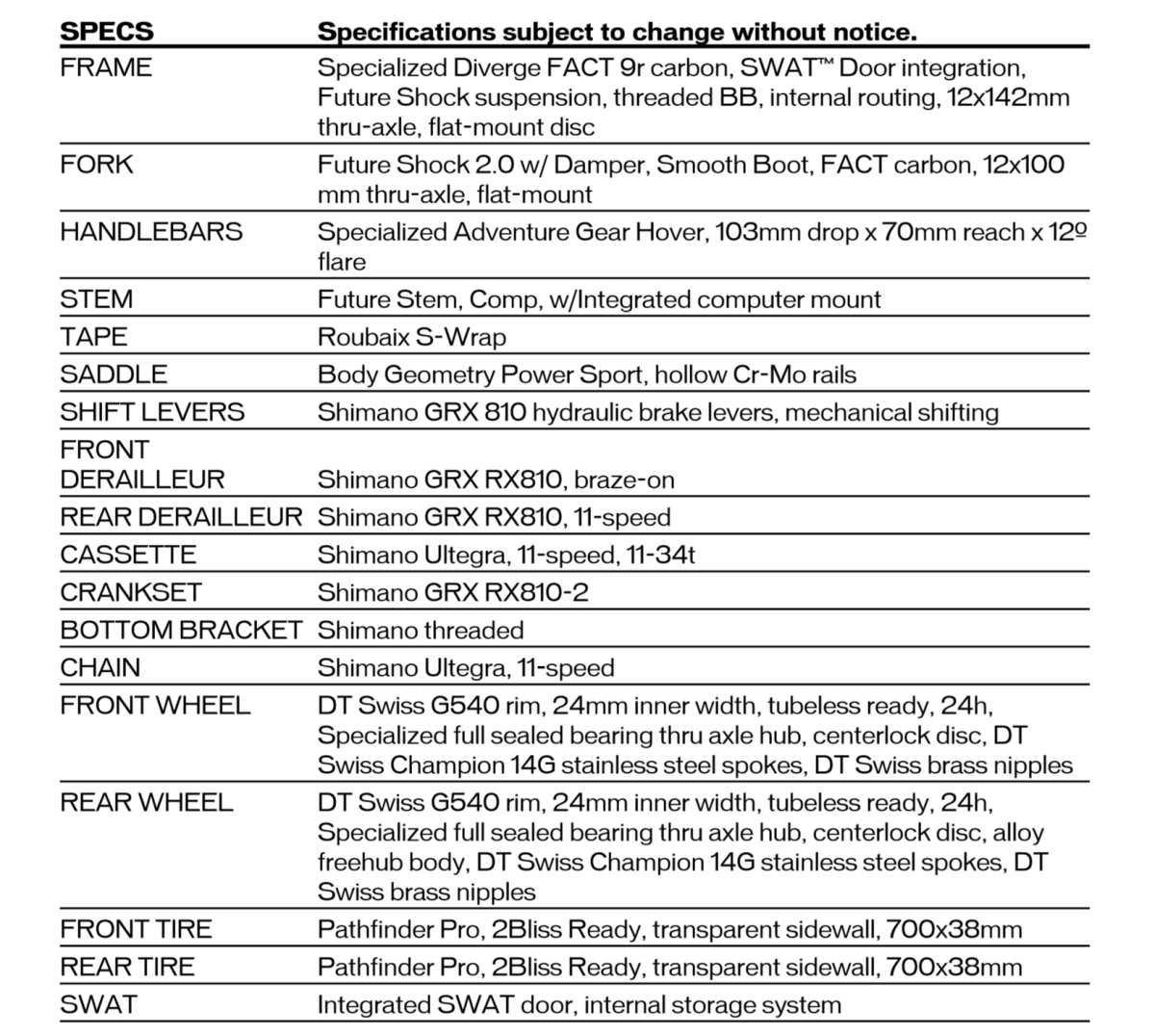
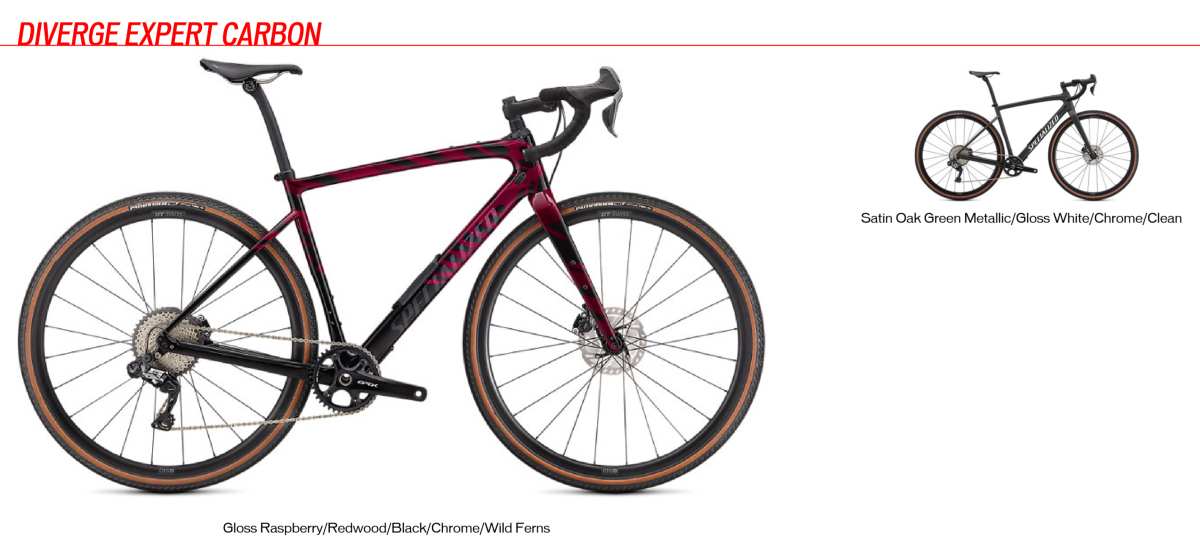
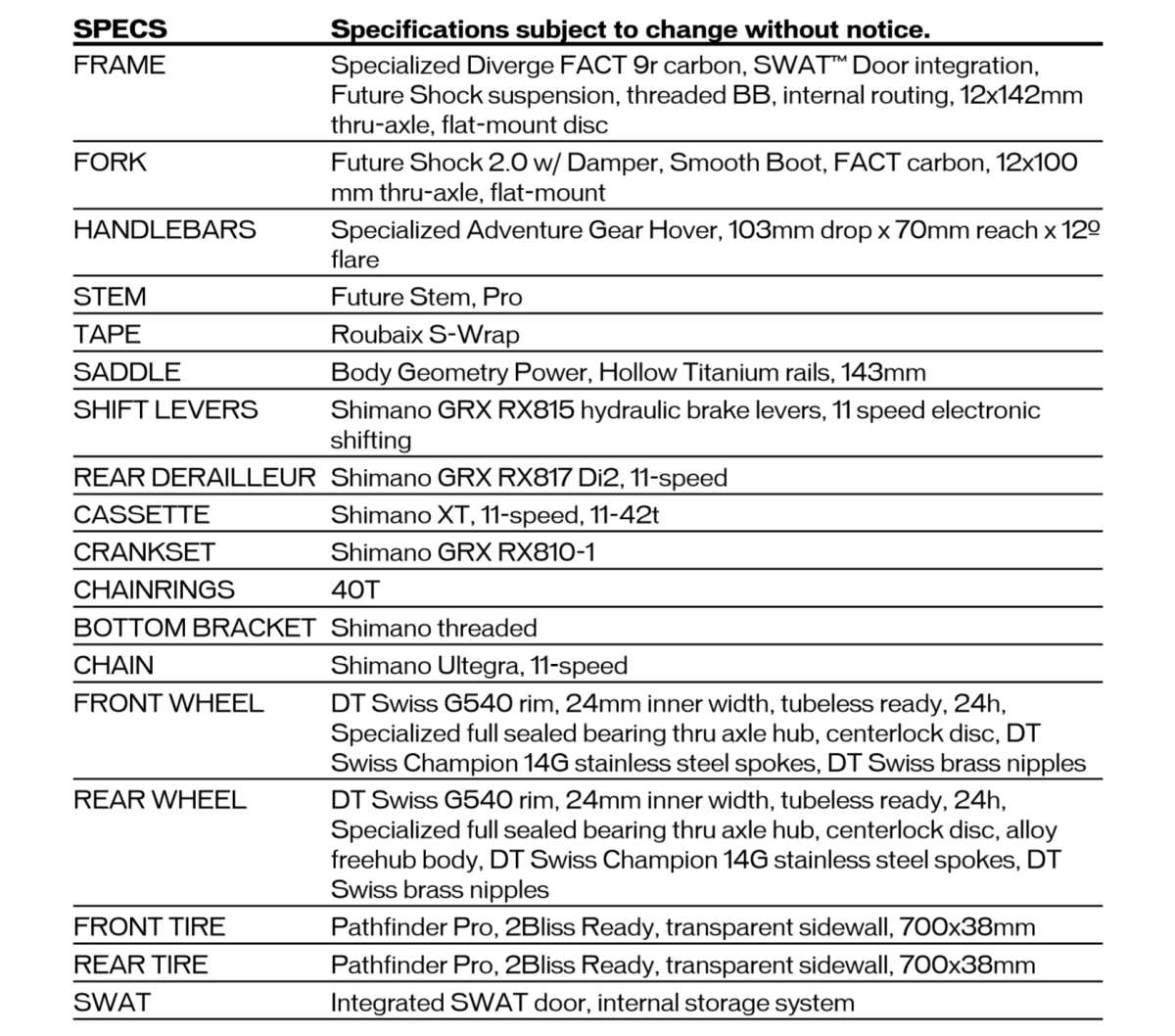
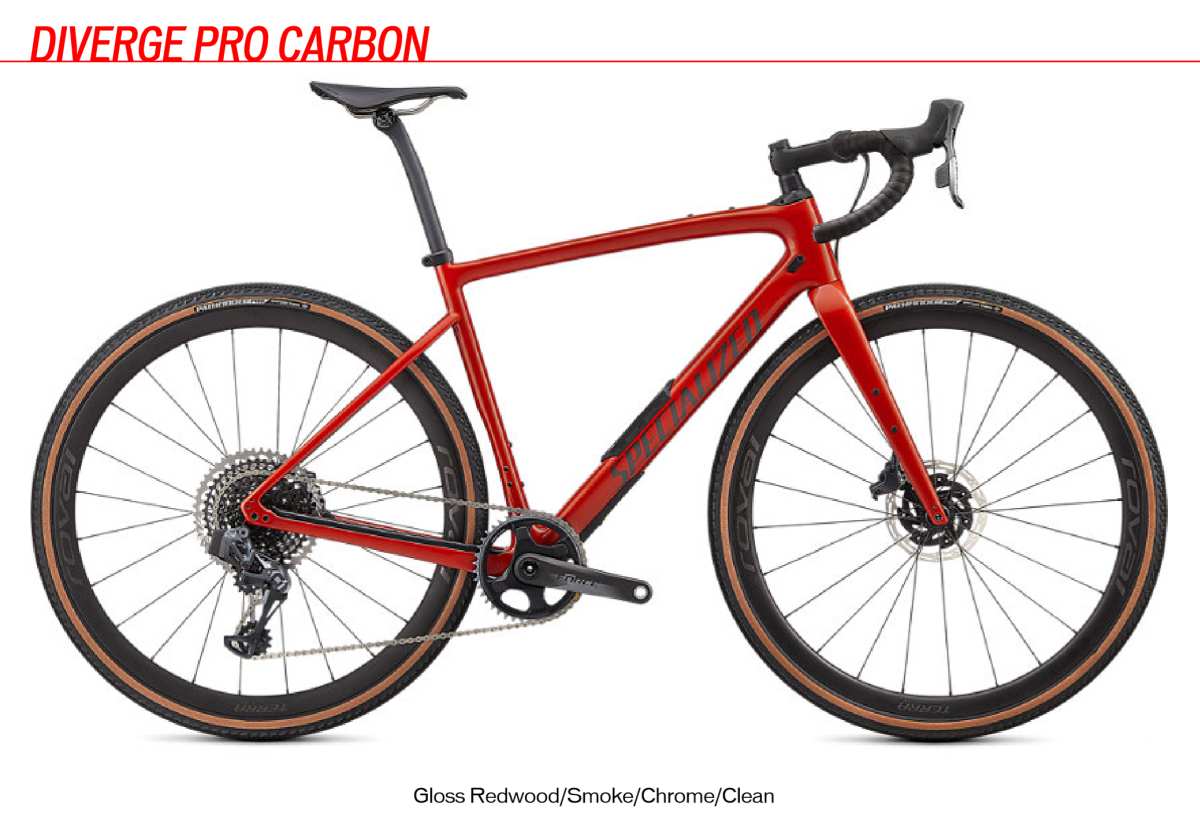
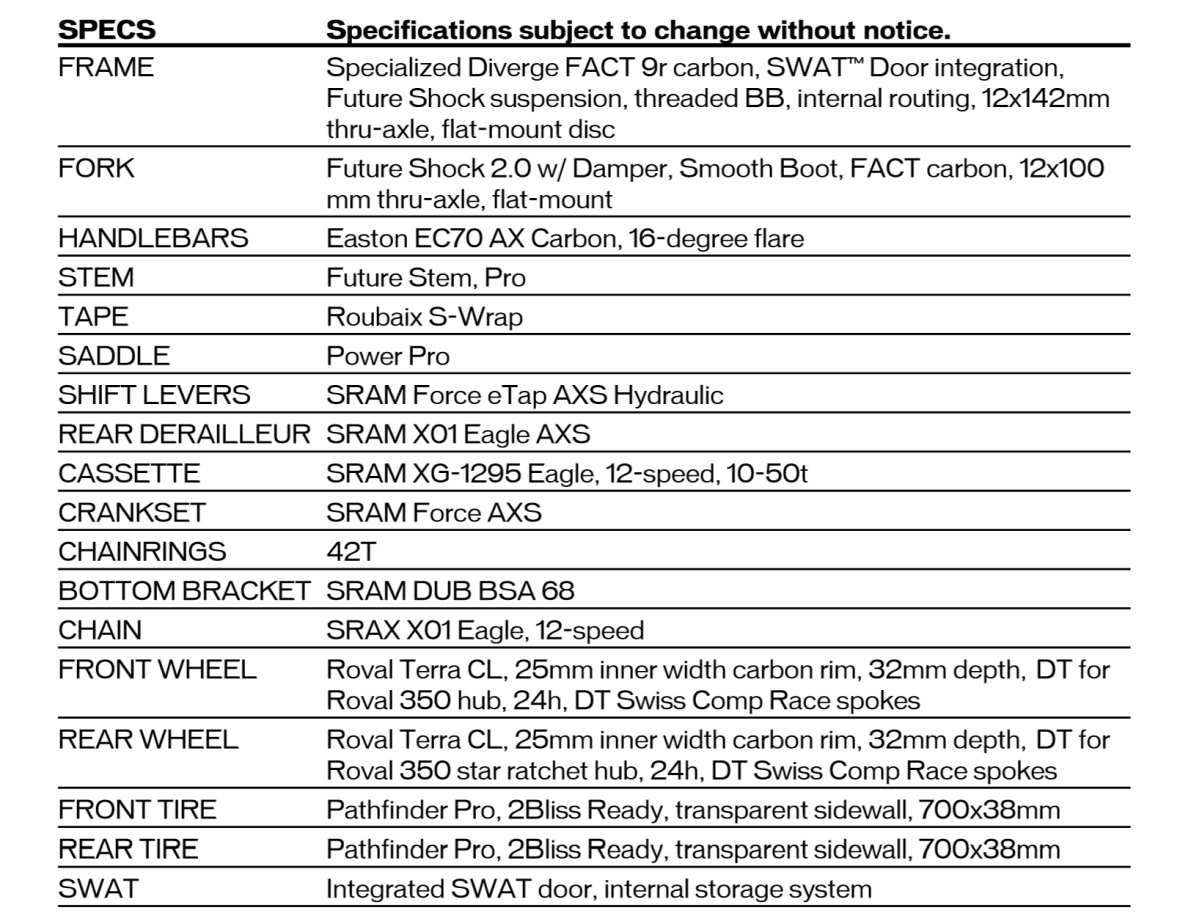
Pricing for all models coming soon. Other than specs, the key differences as you move up the price range is a shift from FACT 8r carbon on the lowest two models, then FACT 9r, with the S-Works jumping to FACT 11r carbon fiber for the lightest frame.
2021 Specialized Diverge Geometry
All drop bar models share the same geometry, buuuut, only the Base and Sport models come in the smallest 44mm size. All others are available from 49 to 64 to fit a wide range of riders.
Article by Gravel Cyclist. Jayson O’Mahoney is the Gravel Cyclist: A website about the Gravel Cycling Experience.
